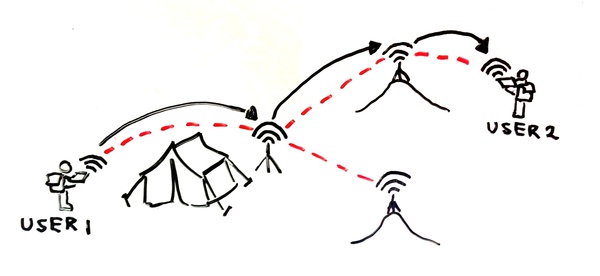Kurt Schwehr just showed me how he uses the
YASnippet template
system to improve his productivity in Emacs. This seems like a really
great tool.
Here's an example. With YASnippet installed, if you're editing a Python
file in Emacs and you type the word class then hit [TAB], it will
expand to the skeleton of a Python class definition:
class ClassName(object):
"""
"""
def __init__(self, ):
"""
"""
That's not all. After expansion, your cursor is left sitting on
ClassName so you can immediately edit the class name to what you
want, and each time you hit [TAB] after that, it will advance the
cursor to logical edit points, skipping over the boilerplate pieces you
wouldn't want to change. Some snippets also call out to other Emacs
functions to do things like auto-fill a current timestamp.
YASnippet is not just for Python. You can define mode-specific snippets
for any mode. YASnippet ships with a few pre-defined snippets for
several modes, including the class snippet for Python mode that we
just used.
If you're interested in using YASnippet, here's the basic process for
setting it up:
- Install YASnippet
- Try out its pre-defined snippets in your favorite Emacs mode
- Look around the web for additional snippet collections specific to your needs
- Write your own snippets
Let's go through the specifics of setting up YASnippet for Python/Django
development. First grab the library.
cd ~/.emacs.d/plugins
git clone https://github.com/capitaomorte/yasnippet.git
Then add this to your ~/.emacs init file.
(add-to-list 'load-path
"~/.emacs.d/plugins/yasnippet")
(require 'yasnippet)
(setq yas-snippet-dirs
'("~/.emacs.d/plugins/yasnippet/snippets"))
(yas-global-mode 1)
(Note: You may want to compare this with the latest version of the
YASnippet README in case the init file setup directions have changed. I
had trouble at first due to version skew with old init file examples.)
At this point you can fire up Emacs and try out the class
tab-completion example above. Now let's add an additional snippet
collection for Python/Django development.
cd ~/lib/elisp
git clone https://github.com/gabrielelanaro/emacs-for-python.git
The emacs-for-python package is an enormous kitchen sink of every
possible Python/Emacs tool you could think of. I've barely scratched the
surface of what's in there. But for now we're just interested in its
snippet collection. To tell YASnippet how to find the new collection,
edit your init file:
(setq yas-snippet-dirs
'("~/lib/elisp/emacs-for-python/snippets/django"
"~/.emacs.d/plugins/yasnippet/snippets")
This gives us a bunch of snippets for Django, like model in Python
mode and block in HTML mode (for editing Django templates).
Finally, let's set up a trivial snippet of our own just to see how it's
done. We'll keep our own personal snippet collection in the suggested
location ~/.emacs.d/snippets. Edit your init file:
(setq yas-snippet-dirs
'("~/.emacs.d/snippets"
"~/lib/elisp/emacs-for-python/snippets/django"
"~/.emacs.d/plugins/yasnippet/snippets")
Notice our personal snippets area is first in the list. Order is
significant--this way you can override a built-in snippet by defining a
personal snippet with the same name.
Our trivial example snippet will expand foo into foobar in Python mode.
To set it up, create the file ~/.emacs.d/snippets/python-mode/foo with these
contents:
# -*- mode: snippet -*-
# name: foo
# key: foo
# --
foobar
To test it out, restart Emacs, edit a Python file, type foo and hit
[TAB]. You should be good to go. If you'd like to make more
interesting snippets, you can model them on examples from one of the
existing snippet collections. Have fun!



